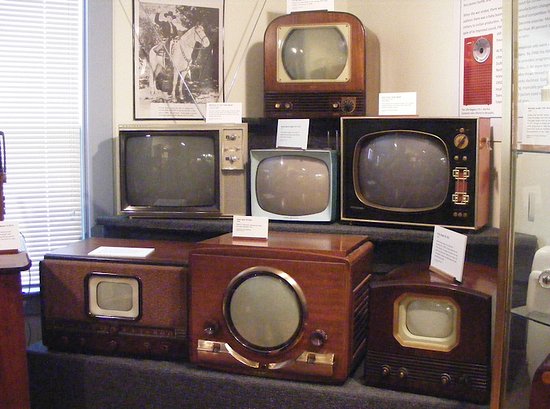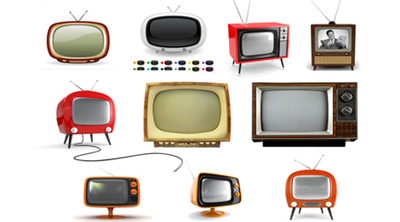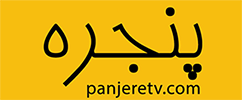Television is a telecommunication tool for sending and receiving moving pictures and sounds from a long distance. This word refers to all parts of television, television programs, and their broadcasting. The word TV is a two-part word that comes from Greek and Latin. “Tel” means “far” in Greek. While “vision” comes from the Latin word “visio” means “to see or see”.


Although the invention of the television was not done by one person, but the person who made this invention perfect and usable was a person named “John Logie Bird”. He was born on August 13, 1888, in Helensburgh, near Glasgow, Scotland. His father was an educated priest but lived in poverty. While studying at school, “John” showed his intelligence to such an extent that even at the age of 12 he created a telephone line with the help of his classmates. He returned to London in 1923 when he was 34 years old and decided to complete his television invention at any cost.
His persistent efforts finally paid off in the spring of 1924, when he was able to reflect the shadow of the Maltese cross up to three yards away. Unfortunately, at this time he did not have enough money to continue his experiments.
To solve this problem, he published notices for help in the newspaper. As a result of these announcements, he was able to provide some money. On October 2, 1925, Brad built another device to transmit images on the screen. When he started the camera, he was surprised by the result, because now all the images appeared on the screen completely and flawlessly. By January 1925, Byrd had successfully aired his television show. And thus, another medium was introduced to the world, which could become popular in the whole world within a few decades and is now considered the most widespread and popular media in the world.
The arrival of television in Iran
The idea of launching television in Iran dates back to 1335. A young man named “Mr. Kazrooni”, from Isfahan, who was from a rich family and had studied cinema directing abroad thought of establishing a television station in Iran and thereby creating a reliable source of income for himself. He even entered into negotiations with foreign companies that produced television transmitters, but these talks did not reach a conclusion and no agreement was reached.
But the attempt to bring television to Iran did not stop and was followed by other people. In the 1330s, the creation of Iran’s National Radio and Television Organization was proposed, but the implementation of this plan was delayed for years. Image production, even for several hours a day, was not a simple task and required private and weekly capital. For this reason, “Habibullah Thabit Pasal”, a private sector capitalist, proposed the establishment of a television transmitter to the then government, and the government accepted his proposal, and in order for the work to be legal, the National Assembly in July 1337 , approved an article with four notes, according to which it was allowed to establish a television transmitter in Tehran under the cover of the Ministry of Posts, Telegraphs and Telephones.
The broadcaster was exempt from paying taxes for up to five years and all its programs followed the regulations of the General Directorate of Publications. Iran’s first TV transmitter broadcasted its first program at 5:00 PM on Friday, October 11, 1337. This transmitter, which was called Iran TV, initially had programs every day from 18:00 to 22:00.
Habibullah Thabit appeared in the magic box during the opening of the TV and said:
“… and you, dear viewers and listeners, if you don’t find a part of the program according to your taste, please forgive us, taking into account the problems and the important point that tastes and tastes are different. In addition, we wish you to support us. Help in the implementation of this service and not only point out the flaws and defects but also thank us in writing for what you think to improve and complete the programs. We will arrange a reward for such suggestions. which will come to your notice in the future…”
In a note two days after the opening of the TV transmitter, the information newspaper called this a social leap in Iran and wrote:
“… Regardless of the terrible inventions of war, television is still the latest and newest invention that science and human civilization have achieved… Television is not only a means of entertainment and entertainment, but it is primarily one of the most sensitive means of communication and in It is used for educational and artistic purposes by all countries that benefit from it.
With the multitude of troubles that have arisen for humans in the new life, time seems so short that it can be said that it no longer has the capacity to cover all tasks and many tasks must be done at the same time as other tasks. A worker who watches a movie while working in a factory or hears the words of a scientific and social figure speaking in his room and sees him himself, does several things at the same time, a housewife who While taking care of the child and doing her housework, she is not deprived of attending a speech or press interview, she makes several uses of her time, which now with television, such uses are also possible for the people of our country. ..”
Even now, after six decades of television entering Iran, more than 50 domestic and international television channels have produced programs in Iran and can be seen in all parts of Iran. This means an amazing little growth in the number of television channels in Iran and a stunning expansion of television and television programs in this country.
Thus, it can be seen that this new tool was well received in Iran and the press considered it a tool for social and cultural leap and strengthening public culture and people’s knowledge and information in various fields. In the beginning, Iranian TV was completely privately run and its costs were financed by advertisements. After one year of operation, the television transmitter station increased its daily programs to five hours in Tehran and established another transmitter in Abadan and a booster transmitter in Ahvaz in 1340.
On the 6th of July 1346, the National Council of Iran re-agreed and passed the government bill on the establishment of Iran’s National Television Organization, which was previously approved by the National Council of Iran and amended by the Senate.
Finally, after the approval of the plan to establish “National Television of Iran”, a small station was created and started broadcasting experimental programs with simple facilities from 1345. The technical facilities of television at that time were limited to one studio, three cameras, and two magnetic recording devices, and since the Iranian TV transmitter worked with the American 525-line system and the national television system was 625-line European, the national television by installing a transmitter Two kilowatts with a 525-line system on top of the Hilton hotel building made it possible for all TV owners with different systems to use this network.
Less than two years have passed since the establishment of National TV, on August 17, 1347, the first city center of National TV was opened in Urmia, and Bandar Abbas TV Center was put into operation shortly after. Television centers gradually started to operate one after another in different cities and brought political, cultural, and entertainment messages to wider sections of people according to the missions set by government planners.
Even now, after six decades of television entering Iran, more than 50 domestic and international television channels have produced programs in Iran and can be seen in all parts of Iran. This issue means an amazing small growth in the number of television channels in Iran and a stunning expansion of television and television programs in this country, but it should be seen in parallel with the small expansion of television programs in Iran, whether the quality of these programs has also improved. Has it moved towards getting better?
